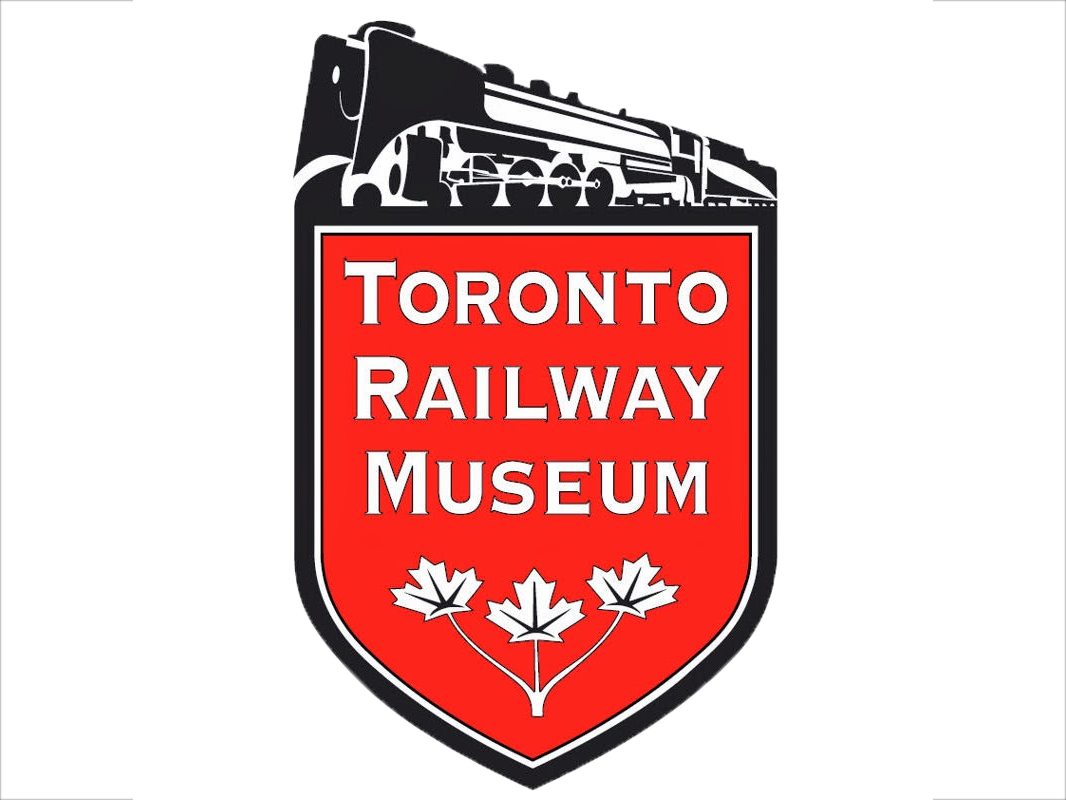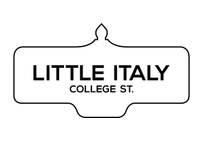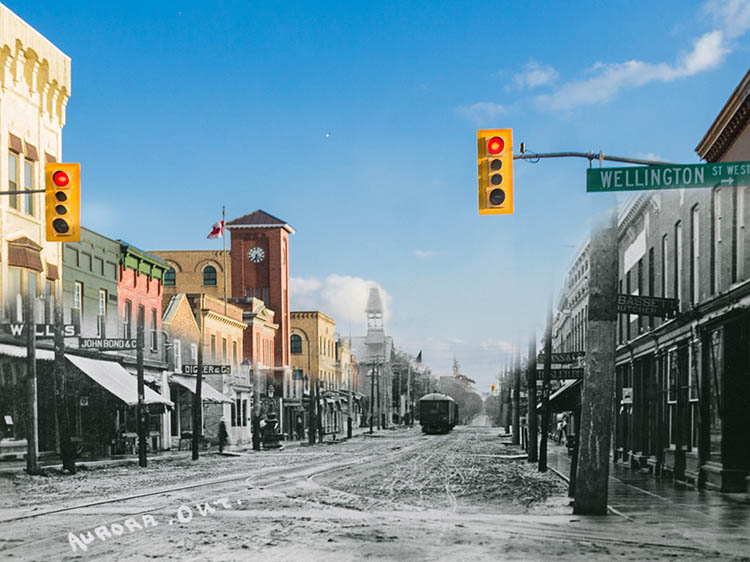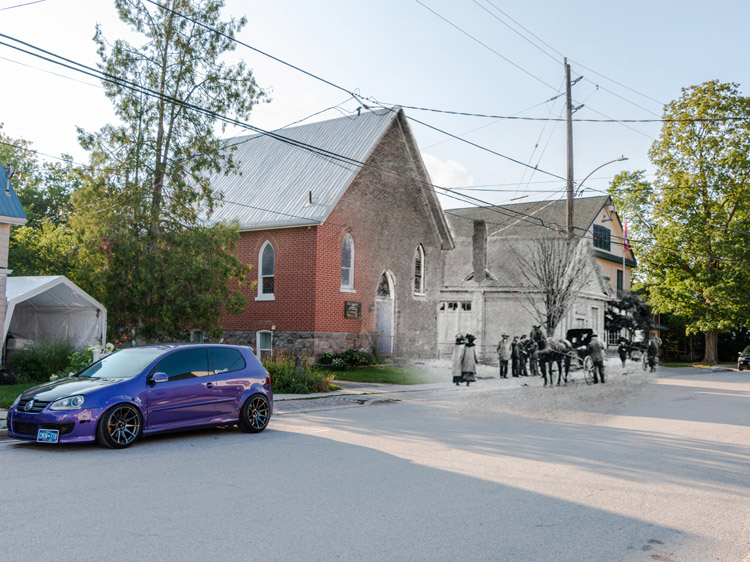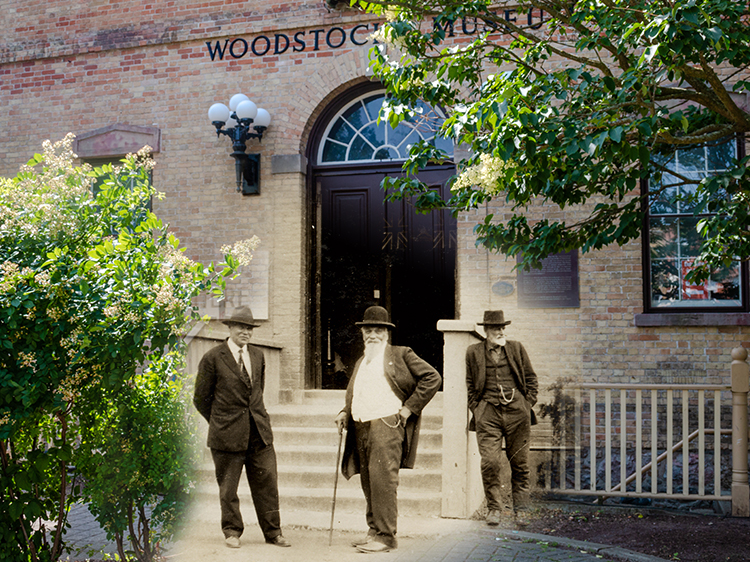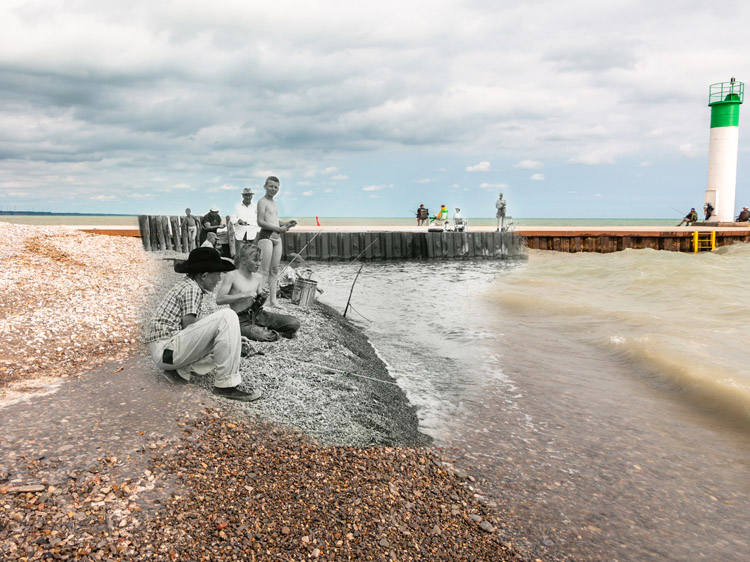Walking Tour
Inside the Toronto Railway Museum
Museum Audio Guide

Welcome to the Toronto Railway Museum. This audio guide will tell you about five of the important historical exhibits inside the building. You can also get a second audio guide for the outdoor exhibits.
When the audio for an exhibit ends you can, if your interest is piqued, spend more time perusing the display in more detail. In addition to the audio guide exhibits you will also find videos, models and exhibits especially for children.
This project is the result of partnerships with the Little Italy College Street BIA, the Toronto Chinatown BIA, and the Toronto Railway Museum.
1. Welcome to the Museum

You are now standing in a part of the roundhouse where steam and, later, diesel locomotives were maintained, or just parked. Locomotives were moved in and out via the turntable you saw on the way in. You can learn more about this outside, or at our History of John Street Roundhouse exhibit at the front entrance.
* * *
You may also hear activity in the workshop at the back. This is where our skilled and painstaking volunteers work restoring future exhibits. Our staff and volunteers are always happy to answer your questions about the exhibits.
For some of you, the museum will be a nostalgic trip down memory lane to when you used to travel by train to get from A to B on both long and short journeys. But many of you are too young to have such memories. Your train travel may be limited to riding subways or commuter trains, or one of the few inter-city trains still running in North America, or in Europe or Asia, or perhaps not at all. Our goal is to help our visitors feel the romance and excitement of trains and train travel and understand their key role in the history of Canada and the rest of the world.
2. GO Transit

GO stands for Government of Ontario and it was the government that stepped in back in 1967 to run a commuter train service along the lakeshore west of Toronto. It has subsequently greatly expanded to more distant parts. In its first year it carried 2.5 million passengers and has been growing ever since. The operation has been overseen by a succession of governing bodies, but since 2007 has been managed Metrolinx – a government of Ontario corporation responsible for overseeing all public transport in the Golden Horseshoe Region.
* * *
But despite this, it has been very successful, and 2018 ridership was over 70 million. One of the ways it has achieved this is by conveying a friendly environment for passengers, as you will see if you look at the exhibits in this display. Smart uniforms, attractive interior design and the move to bi-level trains have all helped, as well as supporting bus services.
A successful commuter service must be convenient, fast and, most importantly, frequent. GO has moved in this direction ever since its foundation. It is also helped by the heavy traffic on the Queen Elizabeth Way, Highway 401 and Highway 400. Many commuters drive their car to the nearest GO station and avoid the traffic jams. Fares are, of course, subsidized because more than just the passengers benefit from the service. In fact, those who drive along the QEW to work benefit more than the GO passengers. Without GO there would be total gridlock.
3. CPR - The Canadian

Watch the video here to learn about The Canadian, a new train launched by the Canadian Pacific Railway (CPR or CP for short) in 1955. This luxury train ran daily between Montreal and Toronto to Vancouver. Travel time between Montreal and Vancouver was 71 hours, 1 hour short of 3 days!
The history of the CPR in the nineteenth and early twentieth centuries is deeply entwined with the history of Canada itself. Canadian historian George Stanley wrote, " Without railways there would be and could be no Canada." Indeed, British Columbia only agreed to become part of Canada in return for a rail link to eastern Canada. The CPR won the bid and the first cross Canada train left Montréal in 1886. These trains also brought tens of thousands of settlers from other countries, who established communities across the prairies and elsewhere in Canada.
* * *
But The Canadian was a great tourist experience, especially when combined with CPR’s grand hotels across the country. However, within five or so years the railway was losing interest in passenger rail service; even in competing with CP Air, one of its own subsidiaries.
It was not easy for CP to get permission to rid of those pesky rail passengers. The Canadian was not only a luxurious trans-continental train, it also served countless tiny communities in northern Ontario and across the prairies whose only transportation to the rest of the world was the train. Take a look at the list of stops on the way – many just on request. They finally stopped running the Canadian in 1968. Canadian National Railways (or CN) operated a competing train journey using the more northerly route you see on the map above the video screen. They, and eventually VIA Rail, took over the name. The Canadian continues to operate to this day, albeit on a reduced schedule, competing for track with freight trains all the way.
Whether operated by CP, CN or VIA The Canadian was, and is, for most passengers a land cruise. Nevertheless, in its short CPR career The Canadian was a world wonder and attracted passengers from across the globe. It certainly wasn’t speedy. It averaged about 34 mph (or 55 kph) over its full journey. Its top speed of about 70 mph is nowhere close to current top speeds of around 200 mph for trains in Europe and Asia, but modern-day trains don’t capture the romance of The Canadian.
Other exhibits here explain the different degrees of luxury that could be bought on the train and the cabinet to the right contains various related artifacts. As you see, even in coach class the degree of comfort was of a whole different order than economy class in today’s aircraft! This was necessary, of course if you were to spend three days sitting in one seat!
You can still capture a taste of what you see in this video by signing up for The Canadian. Don’t wait too long! Alternatively, you can try the Rocky Mountaineer – a private train service that operates various routes between Vancouver and Calgary. You get the views, but you don’t get the whole experience because you are put up overnight at hotels rather than being lulled to sleep (or not) by the rat-a-tat of the wheels. Luxury trains still exist around the world, sometimes hauled by vintage steam engines. They are fabulous, but mostly very expensive, experiences.
4. Art of Wentworth Folkins

Here we see eight prints of paintings by Wentworth Folkins – an Ontario artist who lived from 1928 to 1993. He had a passion for steam trains, which he painted with extraordinary skill. He made trains, and their time and place, come alive, usually clouded in steam. He sometimes added a touch of whimsy – as in the Railway Children painting you see here. There was always lots of hustle and bustle.
* * *
The prints you see were donated to the museum by Derek Boles – the expert of Toronto railways whose book Toronto’s Railway Heritage is on sale by the reception desk and seasonally in our gift shop. It has some marvellous historical photographs of everything railway in Toronto.
The more you look, the more you will become absorbed by the sheer beauty, power and romance of times past. You can almost hear the locomotives hissing and puffing away. If you remember the days of steam, they will thrill you; if you are too young for that, they will give you a taste of yesteryear. There are still a few steam trains operating in Southern Ontario. You can capture a hint of that world by taking the opportunity to ride them. And, of course, there is our CN 6213 outside to give you a sense of the power and size of the locomotives Folkins painted – but, unfortunately, no live steam.
The Toronto North Station is the only building depicted in these prints that still survives. It was magnificently restored in 2004 and is now the flagship liquor store for the LCBO - the largest liquor store in Canada. Drive up Yonge Street north of Davenport and you will still see it in all its glory, albeit serving the public in a rather different way.
Spend time here contemplating the pictures, read the descriptions if you wish, and then turn to your right and look at the selection of old railway advertising prints. While not always so artistic they are also fine illustrations of train travel as it used to be.
5. 1939 Royal Train

British royalty has traditionally travelled in opulent accommodation built especially for them, and with great fanfare. So when King George VI and Queen Elizabeth came to Canada in 1939, Canada felt it necessary to provide them with a train, and not just any old train. As you see from this display, the train was headed by a magnificent and specially painted and decorated Canadian Pacific Hudson locomotive. In fact, the train was pulled by over 20 different steam and electric locomotives during the trip belonging to Canadian Pacific, Canadian National and various American railroads. Three different ones were used while the train was in Toronto. The accommodation on the train was extremely luxurious, consisting of twelve cars as well as a pilot train of a further twelve cars for the press, the RCMP and for excess baggage. The royal coach had a working telephone, which at that time was quite a novelty. At the bottom left of the display you can see photos of the interior of the royal accommodation.
* * *
Since his was the first ever visit to Canada by a reigning monarch, it was a huge event and crowds lined the track everywhere the train went, as you can see in the video. What was the cost? Nobody dared to ask, and if they had they would likely have been tagged as poor sports, or worse. Unfortunately, just a few months later, WWII started and further royal trips abroad were out of the question. You are looking at a special moment in history; we will never see the likes of this spectacle again. Royalty still visits Canada from time to time, but now they fly in and out and mostly fly about when they are here. How unromantic!
6. DAR Nova Scotia

Climb up the steps and you will be inside a very historic railway coach. The renovation of this car was completed only in 2020.
The car was built in 1896 by the Pullman Company for the Dominion Atlantic Railway, or DAR, which ran extensive services mainly in Nova Scotia. It was called the Sans Pareil and operated as a luxury car used frequently by American tourists who arrived by boat from New York and Boston. Eventually the Canadian Pacific Railway bought the DAR, renamed the car the Nova Scotia, and used it as a business car that the railway bigwigs could ride around in in luxury.
* * *
In 1941 the CPR modified the car again into a working business car, used in Quebec until it was bought by the Upper Canada Railway Society and used for public excursions. Finally, in 2012, in rather poor physical shape, it was acquired by the Toronto Railway Museum, whose volunteers embarked on a major renovation project, the fruits of which you are now standing in.
Wander through the car, marvel at the luxurious appointments and look at the historic photographs of Nova Scotia in operation.
When you go outside you will see a display about the explosion. Until the Hiroshima atom bomb it was the largest man-made explosion ever, albeit, entirely unintentional. The display describes the event and goes on to set out the key role played by the railways in the relief efforts in the aftermath of the explosion. It makes for a fascinating and inspiring tale.
7. Don Station

You don’t normally think of railway stations as moveable objects. Yet Don Station moved four times over the course of its life, both during and after its spell of active duty. It survives thanks to the dedicated efforts of people who were determined that Toronto’s railway history should survive, more than just on paper.
* * *
However, traffic dwindled. The trains increasingly passed by it, until by the 1960s it served just one daily service between Toronto and Peterborough run by the CPR. It was finally closed in 1967.
Conservationists won, and in 1969 the station was moved to Todmorden Mills, just up the Don Valley, to be preserved. There, it was open to the public for a while before closing and being used for storage.
Finally, in 2008, it was decided to undertake a major renovation and move it to Roundhouse Park, where it sits today and houses the museum gift shop and miniature train ticket office.
You can read the full details on the display in front of you. It is a testament to the history of railways in Toronto and to the dedication of all who laboured to preserve it.
8. Conclusion

That’s all for the audio guide inside the museum.
Spend as much time as you like browsing, ask questions and, if you have not already toured the outside exhibits, by all means continue the audio guide outside. Contemplate the enormous role railways have played in our history. Unlike airplanes, they came right into and through the city, so everyone had a chance to see them and enjoy them. They also cursed them for their noise and, in the days of steam, the soot and smoke. If you are a local resident and plan to come back, why not become a member? You will save money and receive sneak peeks at our latest exhibits and events.



